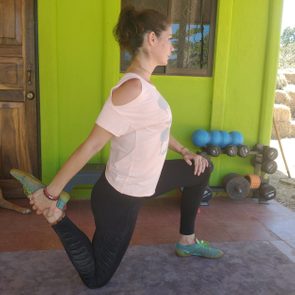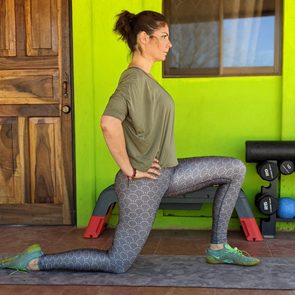4 Hamstring Exercises You Can Do at Home
Updated: Jun. 01, 2021
You don't need a gym membership to work your hamstrings. You can easily do these hamstring exercises at home.
Focus on your hamstrings
For many people, lower body strength-training means a lot of squats and lunges, with maybe a few machine-focused exercises thrown in for good measure.
It’s not wrong to assume these exercises will target and strengthen all the major muscle groups of the lower body. The problem is, they don’t target all of those muscles equally.
The most popular leg-strengthening exercises tend to focus more on the quadriceps, the group of four strong muscles found on the front and side of the thigh. They’re less effective for hamstrings, the group of three muscles on the back of the upper leg.
That can leave you a little unbalanced when it comes to the major muscle groups in your thighs.
Unfortunately, when opposing muscle groups (like the quads and hamstrings) are unbalanced, you’re more prone to injury.
The good news? A few hamstring-focused exercises can help you correct a quad-focused workout routine. You can even do them at home.
Injuries are often due to imbalances
A squat-heavy workout isn’t the only thing that can lead to an imbalance between the quads and hamstrings. Modern life primes you for muscle imbalances. Most people spend their days sitting at a desk, in the car, and on the couch.
This constant sitting means that you’re hips are flexed most of the day. When your body becomes used to holding a specific position, it adjusts to accommodate.
“Because of our lives, the hip flexors get really tight, and the hip extensors get weak,” says David Rosales, the co-owner of Roman Fitness Systems and a personal trainer certified by the National Strength and Conditioning Association. “Because of this, the pelvis tilts forward excessively as the tight hip flexors tug on it.”
The result: hamstrings that are lengthened and overstretched. Typically, they’re comparatively weak compared to the quadriceps.
So if you transition from your seated, hip-flexed position to an athletic endeavor that requires your hamstrings to engage and your hips to extend (like a sprint), your hamstrings may not be able to handle the sudden stress and movement.
This is when strains, sprains, and tears typically occur. “Most people think they need to stretch their hamstrings more, but often this exacerbates the problem,” Rosales says. In fact, a 2016 study published in The American Journal of Sports Medicine found that there was no relationship between hamstring flexibility and hamstring injuries in amateur soccer players.
So stretching more likely isn’t the solution. Strengthening almost definitely is.
“Strengthening the hamstrings via hip extension won’t just help prevent hamstring injuries but also help posteriorly shift the pelvis, which in turn will allow you to use your powerful hip extensors more efficiently during exercise,” says Rosales.
Easy, home-based hamstring exercises
There are lots of exercises that can help strengthen the hamstrings. Focusing on hip extension is critically important.
In a 2018 study sponsored by the American Council on Exercise, researchers compared nine different hamstring exercises. The kettlebell swing, single-leg dead lift, and prone leg curl were the most effective in targeting the hamstrings.
These exercises encourage hip extension of the working leg, and both the kettlebell swing and single-leg dead lift can easily be performed at home. (Prone leg curls are usually done at a gym.) But they’re not the only options.
Consider adding the following exercises to your routine.
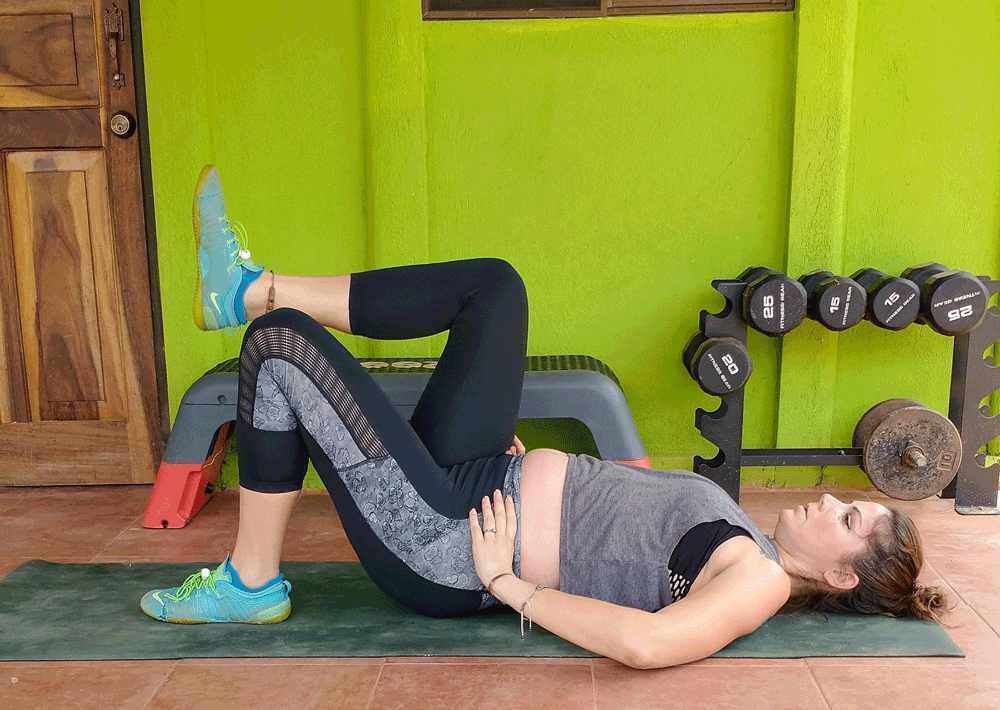
Single-leg glute bridge
Like the name suggests, the glute bridge targets the glutes—aka your butt. But it also requires engagement of the hamstrings to push your hips up and away from the ground in a powerful extension. It’s a great option if you don’t have any equipment. This single-leg version requires even more hamstring engagement to help power the hip extension.
Start on your back on the ground. Bend your knees and keep your feet flat on the ground, roughly hip-distance apart. Lift your right foot from the ground. Your right knee and hip should be flexed at roughly 90 degrees.
From this position, take a breath in and engage your core, glutes, and hamstrings. As you exhale, powerfully press your hips up, extending them fully. You’ll power the movement with your left glute and hamstring. Slowly lower your hips back to the floor.
Complete eight to 12 repetitions with one leg before switching sides. Complete two to three sets per leg.
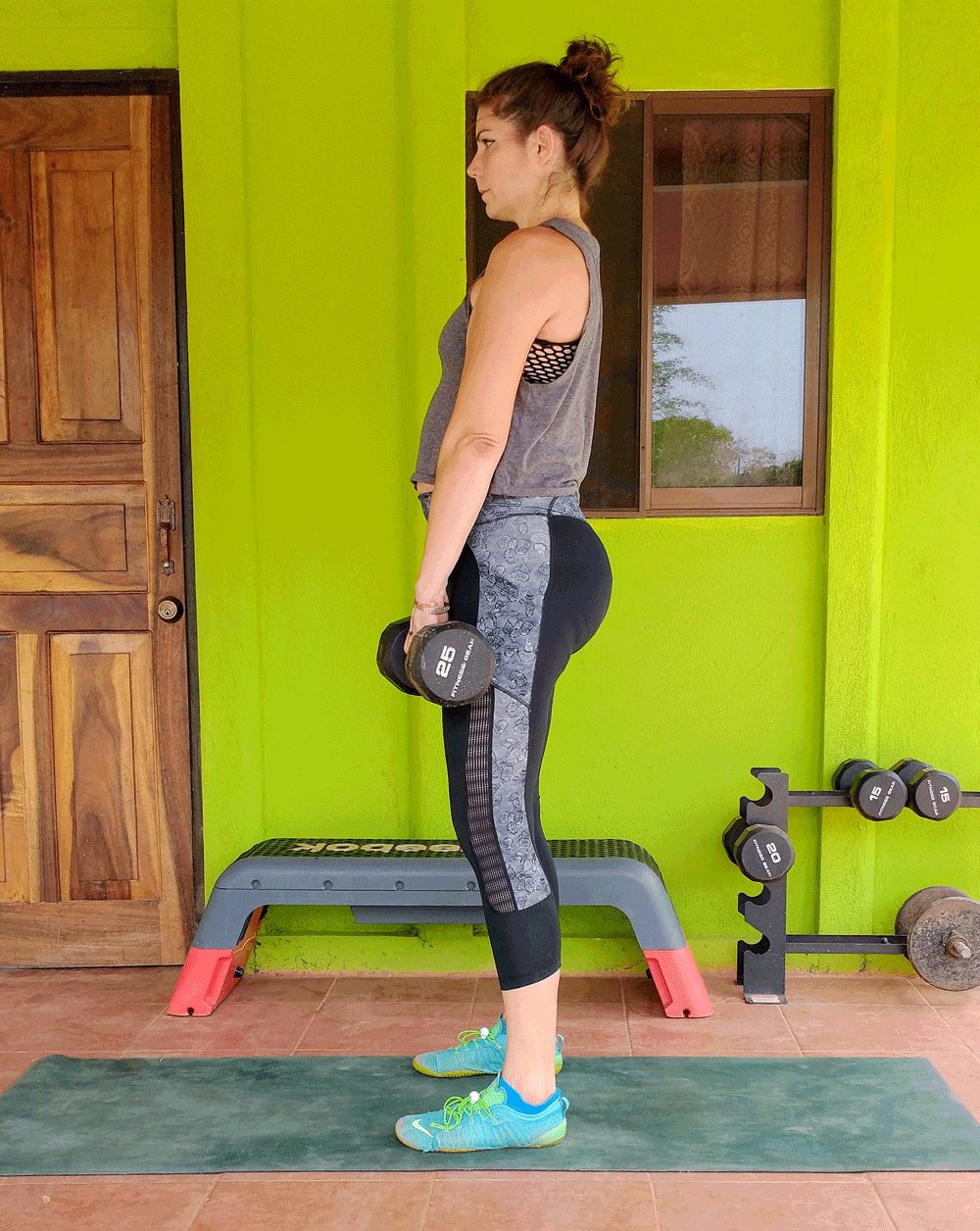
Dumbbell Romanian dead lift
The dumbbell Romanian dead lift is another glute- and hamstring-focused exercise that helps train hip extension.
Start standing, with your feet roughly hip-distance apart and your knees slightly bent. Hold a dumbbell in each hand in front of your thighs, your palms facing your legs. Roll your shoulders back and check to make sure you’re maintaining good posture.
Keep in mind: movement comes from pressing your hips backward. Your torso will remain straight and aligned from your head to your hips throughout the movement. Your chest and shoulders shouldn’t “round” toward the floor.
Take a breath in, engage your core, and roll your shoulders back. Press your hips back, keeping your legs almost completely straight (just a slight bend at the knees) so your torso tips toward the floor.
Slowly and steadily continue pressing your hips back and tilting forward, allowing the dumbbells to “graze” the front of your legs as you lower them.
When you feel a stretch along the back of your thighs, engage your hamstrings and glutes. Use these large muscle groups to “pull” your torso back to standing as you fully extend your hips.
Perform 10 to 15 repetitions. Complete two to three sets.
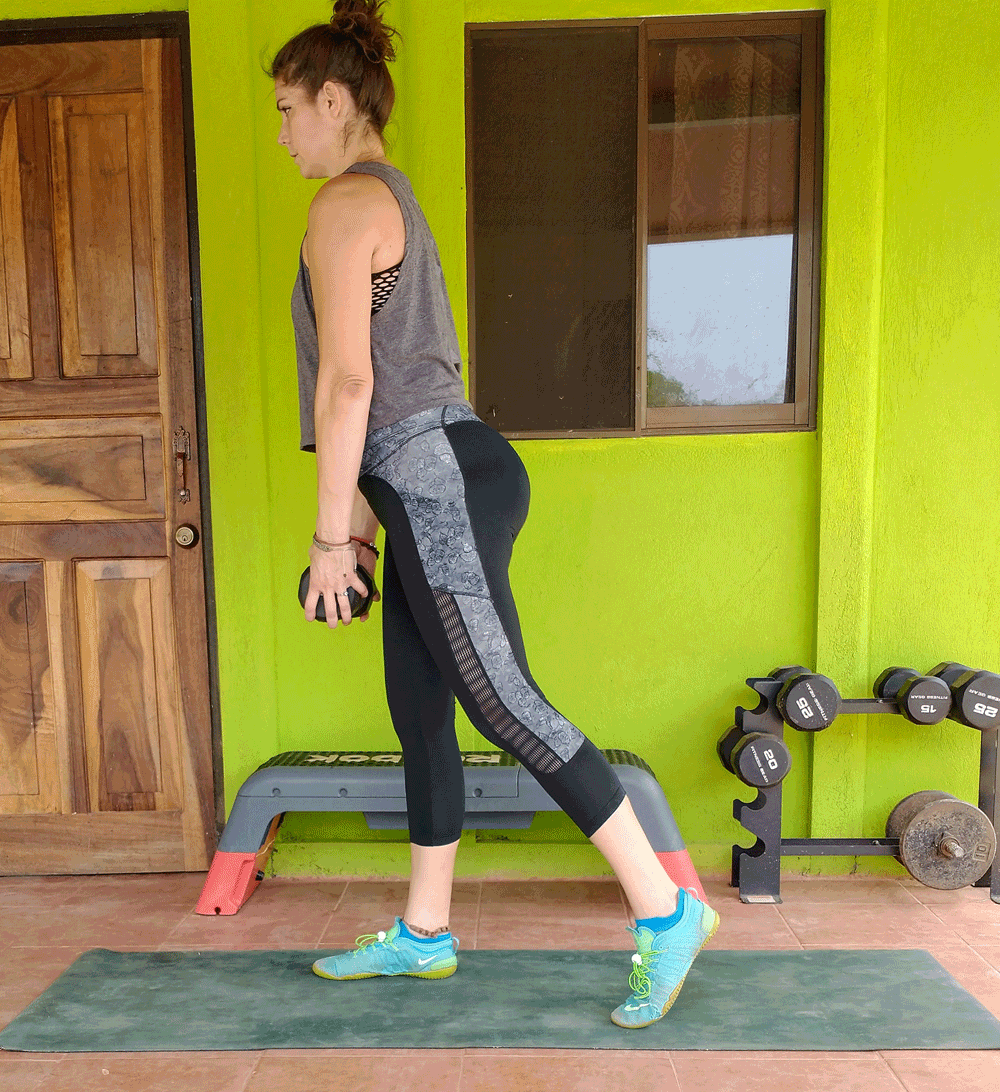
Single-leg dead lift
The single-leg dead lift targets each hamstring and glute individually, which can help correct any side-to-side strength differences between each leg.
Stand tall, with feet hip-distance apart, knees slightly bent, and torso engaged. Make sure you’re maintaining perfect posture. You can hold a dumbbell between your hands, or one in each hand, to add resistance. You also can perform the exercise without resistance.
Step your left foot back, extending your left hip behind you. The ball of your left foot will rest lightly on the ground. This is the starting position.
Engage your core. The goal is to keep your torso completely straight as you perform the exercise. Take a breath in, engage your right glute and hamstring, and tip your torso forward from your right hip as you simultaneously lift your left leg behind you.
Try to keep your hips level as you tip forward—you don’t want your left hip to start rotating upward toward the ceiling. The dumbbell should graze the front of your right leg as you lower it toward the floor.
The end position should look a bit like a “T,” with your torso and your back leg level and extended straight in opposite directions, perpendicular to your right leg. If you can’t bend that far forward, that’s OK. Only tip forward as far as you feel comfortable.
When you feel a stretch along the back of your right leg, further engage your right hamstring and glute and use them to “pull” your torso back to the standing position.
Perform eight to 12 repetitions on one leg before switching sides. Complete two to three sets per leg.
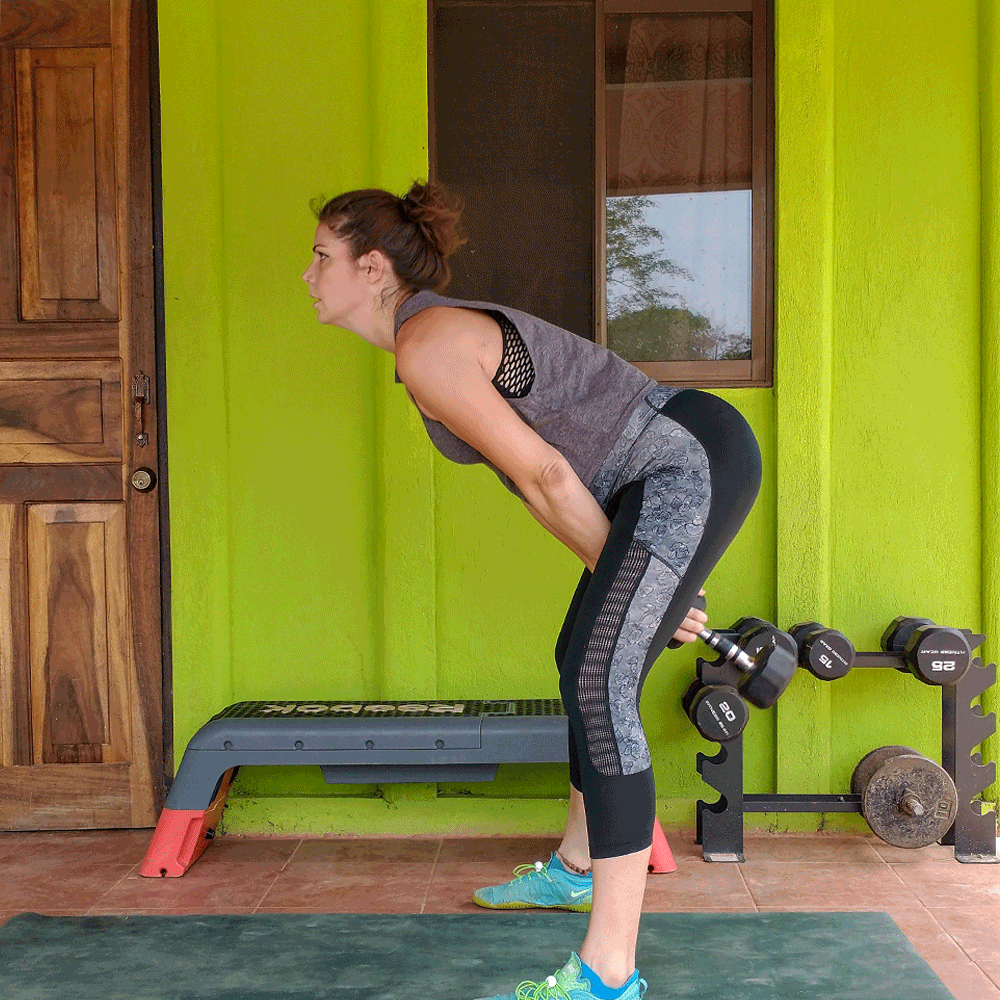
Dumbbell/kettlebell swing
This exercise can be performed with a dumbbell or a kettlebell, depending on what you have on hand. To perform the hip extension, you’ll need to engage of your core, glutes, and hamstrings.
Remember, this exercise is performed with momentum, but that doesn’t mean it’s uncontrolled. Keep a keen focus on your abs and core to help protect your back. And avoid using your shoulders and arms to move the weight; the swinging motion should come from your hip extension.
Stand tall, your feet roughly shoulder-distance apart, your toes angled slightly outward. Hold a dumbbell vertically between both hands (or hold a kettlebell by its handle). It’ll extend straight down.
Bend your knees slightly, take a breath in, and engage your core to keep your torso straight. Press your hips back, allowing the dumbbell to swing back between your legs slightly.
Engage your glutes and hamstrings, and powerfully press them forward, extending your hips. This will cause your knees to extend as well.
As you press your glutes and hamstrings forward, allow the dumbbell to swing forward naturally.
Immediately reverse the movement, pressing your hips back and bending your knees slightly, allowing the dumbbell to swing backward again. Continue this forward-backward swinging motion, powered by your hips.
As you continue, you’ll notice the momentum builds and the swinging motion becomes greater.
The goal is to get the momentum to the point where the dumbbell naturally swings up to roughly shoulder-height, all powered by your hips.
Perform the exercise for 30 to 45 seconds. Rest, then repeat two to three times.
Next up, after your workout, cool down with these stretches.
















